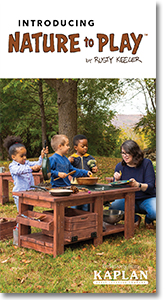What is Our Part in Improving Children’s Lives?
Eugene Ionesco
Caring Spaces, Learning Places, the well-loved book by Jim Greenman, revised by Mike Lindstrom, urges adults to take a step back from day-to-day planning to ask the big questions about what really matters in programs for children. In today’s world, where many early childhood organizations are fighting for survival, it may seem impossible to think about anything other than day-to-day needs. But Caring Spaces makes the point that by focusing on what really matters, a program will rally family support, engage staff in a deeper way and find out-of-the-box ideas for meeting challenges.
Greenman wrote: “Early childhood professionals think a lot about children in making particular programs work. The very task-oriented focus is on children’s needs, development, curriculum, defined in a variety of ways by adults. Suppose the preoccupation with these and like notions were suspended every so often, long enough to simply think about children’s lives in a broad context. Of course, childhood is made up of elements that fit into all these notions, but perhaps, by shifting the focus, new insight may be gained into what it is like to be a child today, and what our part is in improving children’s lives.”
For more information about Exchange's magazine, books, and other products pertaining to ECE, go to www.ccie.com.
|
© 2005 Child Care Information Exchange - All Rights Reserved | Contact Us | Return to Site


